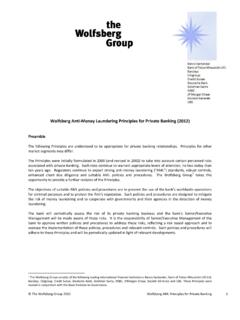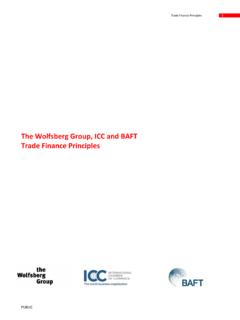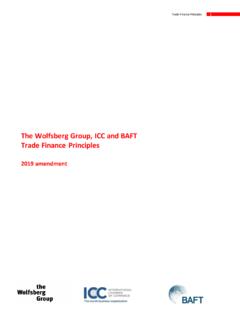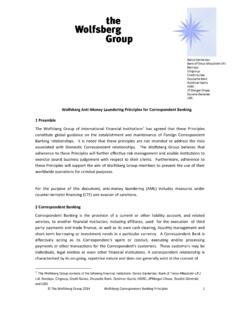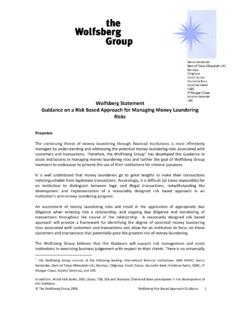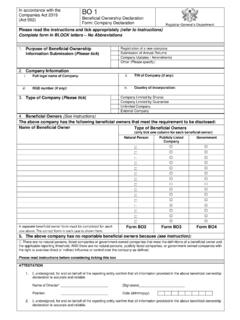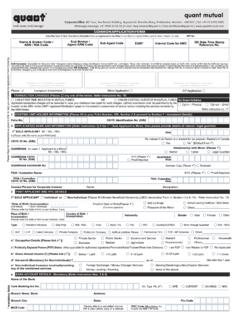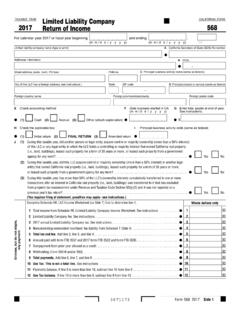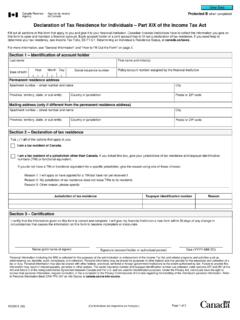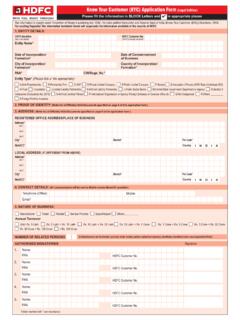Transcription of Correspondent Banking Due Diligence Questionnaire (CBDDQ)
1 The Wolfsberg Group 2020 CBDDQ Completion Guidance 1 The Wolfsberg Correspondent Banking Due Diligence Questionnaire (CBDDQ) Completion Guidance April 2020 The Wolfsberg Group 2020 CBDDQ Completion Guidance 2 Overview In response to both an increase in regulatory expectations as well as a call for action from the Financial Stability Board ( FSB ) Correspondent Banking Coordination Group ( CBCG ), the Committee on Payments and Market infrastructure ( CPMI ) and the Financial Action Task Force ( FATF ), the Wolfsberg Group ( the Group ) has revised its 2014 Correspondent Banking Questionnaire and issued the Correspondent Banking Due Diligence Questionnaire ( CBDDQ ). This document has been produced to support the completion of the Questionnaire . The objective is to drive consistency through the correct interpretation of the questions.
2 Ultimately, the Group expects that Correspondent Banking entities ensure the quality of the data collected is both accurate and consistent. In the guidance notes below, the Financial Institution ( FI ) completing the Questionnaire is referred to as the Entity . The Wolfsberg Group 2020 CBDDQ Completion Guidance 3 Completion of the CBDDQ The Questionnaire has been designed with the following completion format: Drop down answers: Provide specific answers yes, no. The selection of the response is mandatory, except where, in answering no, the subsequent questions become not applicable. Free text boxes: Entity to provide the mandatory response in a free text format, including the elements described in the Wolfsberg Group CBDDQ Completion Guidance. Where the Entity may want to provide additional context to responses provided in a specific section, it may utilise the free text box at the end of each section, highlighting the question number and providing context.
3 Note that all free-text boxes, with the exception of questions 49a and 52a, have a limit of 320 characters. Ensure that when responding to the Questionnaire , all responses are provided at the Legal Entity level. This means the Financial Institution must answer the Questionnaire at an ultimate parent / head office level and covering all branches which act as responding entities (unless otherwise specified). If a response differs for one of its branches, this needs to be highlighted and details explaining the difference captured at the end of each subsection or free text box, where available. In the event that a branch business activity (products offered, client base, etc.) or FCC control program is significantly different than its head office, the Entity may also complete a separate Questionnaire for that branch.
4 This Questionnaire should not cover more than one Legal Entity. This means the Financial Institution must answer the Questionnaire at an ultimate parent / head office level and separately for applicable subsidiaries. Note that not all questions have associated guidance notes. Refer to the Glossary for additional clarifications. Declaration Statement When the Entity completes the Questionnaire , it must have the Declaration Statement completed and signed off. This section requires the signature of the Global Head of Correspondent Banking , or equivalent, and the Money Laundering Reporting Officer, or equivalent. The inclusion of the Business into the Declaration Statement acknowledges the Business Management accountability for Correspondent Banking risks. The Wolfsberg Group 2020 CBDDQ Completion Guidance 4 Question 2 Append a list of foreign branches which are covered by this Questionnaire Refer to page 3 Completion of the CBDDQ for further guidance.
5 Include the Legal Entity foreign branches, unless there is a branch which has different business activities/clients or does not follow the same Financial Crime Compliance Programme. List all branches acting as responding entities, including full name and country of location. Question 3 Full Legal (Registered) Address Registered address for Legal Entities is also known as address of incorporation. Question 4 Full Primary Business Address (if different from above) Address where the Entity is primarily physically located (similar to principal business address or address of residence). Question 5 Date of Entity incorporation/ establishment Provide the date of incorporation. If the full date is not available, provide the year and explain why the full date is not available. Question 6 Select type of ownership and append an ownership chart if available ownership chart means a visual representation of the ownership structure, including percentage of ownership and the full name of all parent entities and ultimate beneficial owners.
6 Question 6 If Y, indicate the exchange traded on and ticker symbol Provide the full names of all the stock exchanges where the ordinary shares/common stock are primary listed along with the unique ID used by each stock exchange to identify the security. Question 6 c Where a government or state owns 25% or more If Entity is owned 25% or more by a government, state owned body or state agency (directly or indirectly) for the purpose of of an entity performing state related activity versus an investment stake. Question 6 b Member Owned/ Mutual Mutual Societies are organisations owned by their members and managed for their benefit, such as a building society, friendly society, credit union, registered society (including: co-operative societies, industrial and provident societies, community benefit societies, which are registered legal entities and hold limited liability).
7 Question 6 a Publicly Traded (25% of shares publicly traded) Entity is publicly traded if 25% or more of its ordinary shares or common stock are listed on a stock exchange. CBDDQ Completion Guidance Entity & ownership Question 1 Full Legal Name Also referred to as company name. The Wolfsberg Group 2020 CBDDQ Completion Guidance 5 Question 6 If Y, provide details of shareholders or ultimate beneficial owners with a holding of 10% or more Provide immediate and ultimate shareholders (legal entities and natural persons) full names and percentage held. Question 8 Does the Entity, or any of its branches, operate under an offshore Banking license (OBL)? Offshore Banking license means a license to conduct Banking activities which, as a condition of the license, prohibits the licensed entity from conducting Banking activities with the citizens, or in the local currency, of the country which issued the license.
8 Question 9 Name of primary financial regulator / supervisory authority This is the regulator with primary responsibility for oversight of anti-money laundering, counter terrorist finance and other types of financial crime compliance. Question 11 Provide the full legal name of ultimate parent (if different from the Entity completing the DDQ) Provide the name of the entity that effectively holds/controls majority voting power over the responding party. Question 12 Jurisdiction of licensing authority and regulator of ultimate parent If applicable, country in which the primary financial regulator/ supervisory authority of the ultimate parent is established. Question 10 Provide Legal Entity Identifier (LEI) if available A Legal Entity Identifier (or LEI), is a 20-character identifier that identifies distinct legal entities that engage in financial transactions.
9 It is defined by the International Organization for Standardization (ISO) 17442. Question 8-a If Y, provide the name of the relevant branch/es which Include any branches or entities which operate under an offshore Banking license and Country of Location/Jurisdiction. operate under an OBL Question 7 % of the entity's total shares composed of bearer shares Are share certificates issued in bearer form? ownership is signified by possession of certificates issued to bearer . CBDDQ Completion Guidance Entity & ownership Question 6 d Privately Owned Select privately owned if 6a, b or c do not apply. The Wolfsberg Group 2020 CBDDQ Completion Guidance 6 Question 13 b Private Banking / Wealth Management Refer to the Glossary for further details. If the Entity does not provide both services, specify which service is applicable in Other.
10 Question 14 Does the entity have a significant (10% or more) portfolio Indicate whether the entity has non-resident customers whose combined revenue represents 10% or more of the total of non-resident customers or does it derive more than 10% of its revenue from non-resident customers? (Non- resident means customers primarily resident in a different jurisdiction to the location where bank services are provided.) Question 14 a If Y, provide top five countries where the non-resident customers are located. revenue or if the number of non-resident customers is 10% or more of the total customer base. List the top 5 countries where the non-resident customers are located. Question 15 Select the closest value: Question 15 b Total Assets Provide the Total Assets per the Entity s latest audited balance sheet, including any applicable branches.

